I feel like writing a big ol' post about my latest adventures with night sky photography. This will be of interest to only a few, so don't say you weren't warned.
June is a good month for photographing the Milky Way, so after we got back from Paris I decided to give this another go on my next moonless dex night. That was the evening of June 27. I also figured I might as well find the darkest site I possibly could, which turned out to be this one a few miles north of Desert Center:
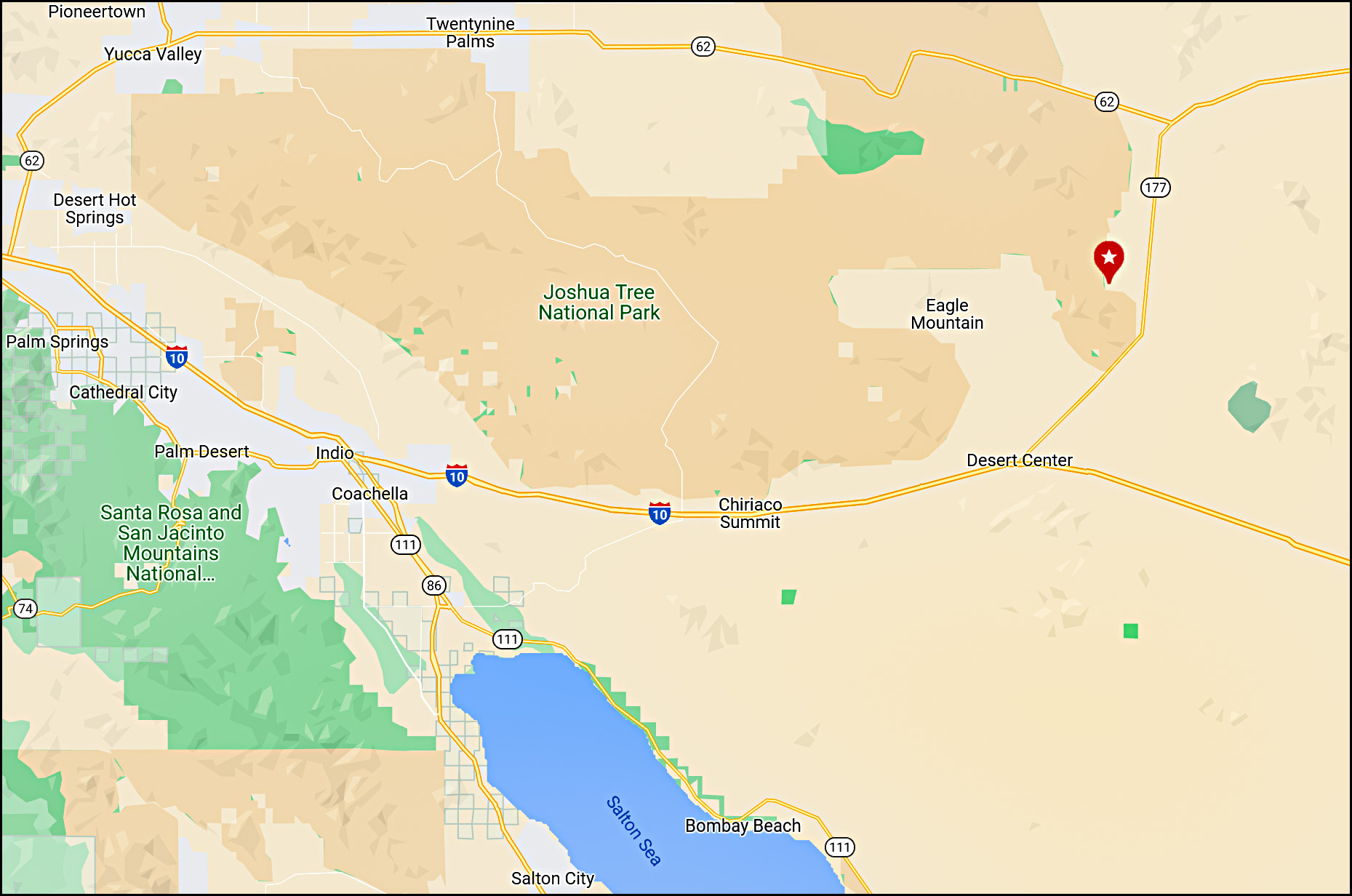 According to my dark sky map, this is just about the darkest spot in all of Southern California. So off I went.
According to my dark sky map, this is just about the darkest spot in all of Southern California. So off I went.
When I got there, the sky was great. It was clear and dark and beautiful. So I pointed my camera at the core of the Milky Way, took a dozen shots, and then stacked them when I got home. It came out pretty well:
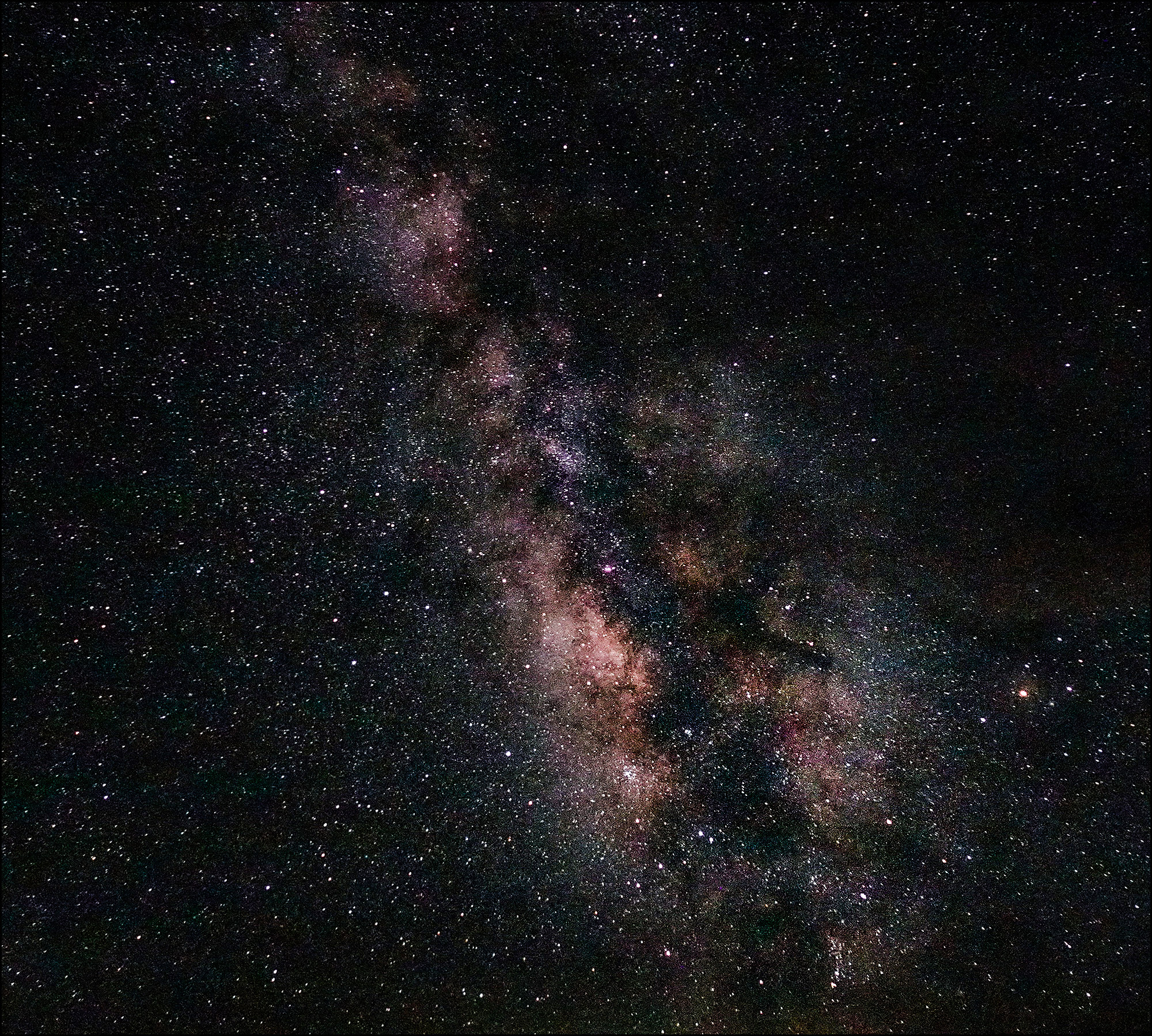
This is about as good as I'll ever get given the limitations of my camera. However, there was also an experiment I wanted to try: I have a filter that allegedly filters out light pollution and I wanted to see how well it works. Here's a side-by-side comparison:
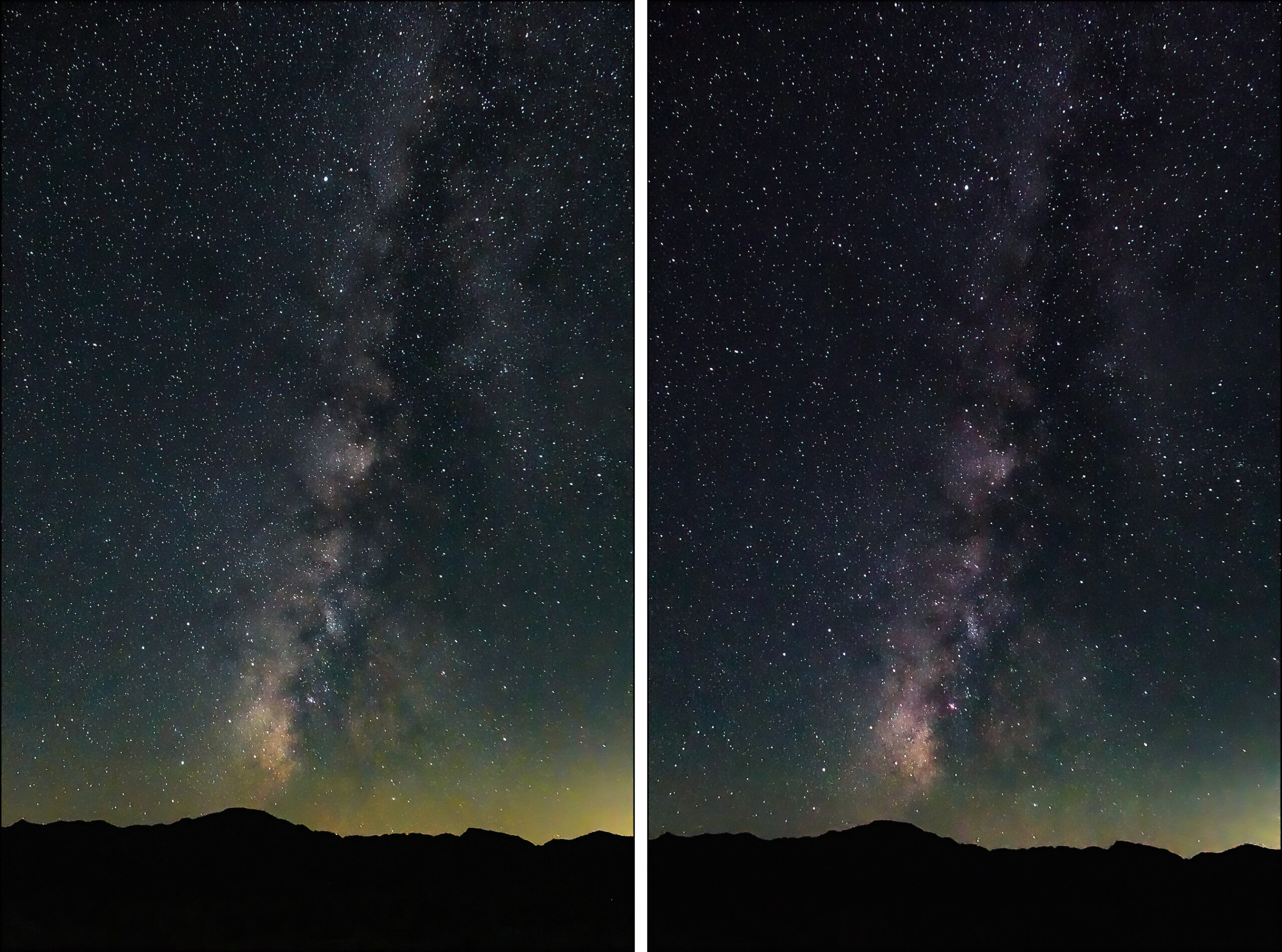 The filtered image is on the right. Toward the horizon it really does filter out some of the crap and add a bit of definition. On the other hand, it also adds a magenta tint and blocks a bit of light. It's something of a wash, I think.
The filtered image is on the right. Toward the horizon it really does filter out some of the crap and add a bit of definition. On the other hand, it also adds a magenta tint and blocks a bit of light. It's something of a wash, I think.
But this is only the beginning of my story. What really drew my attention at the Desert Center site was something else: I could see the entire arch of the Milky Way with my bare eyes. That had never happened before, so naturally I set everything up and started shooting a vast panorama that would capture the entire arch.
It was a disaster. The biggest problem was focusing on infinity. Unlike a fixed length lens where you just set the focus at maximum and snap away, the zoom lens on my camera has a different infinity point at every zoom setting. What's worse, the night sky is too dark for autofocus to work and it's also too dark to see anything. So you have to guess at the correct focus. Here's what that looks like:
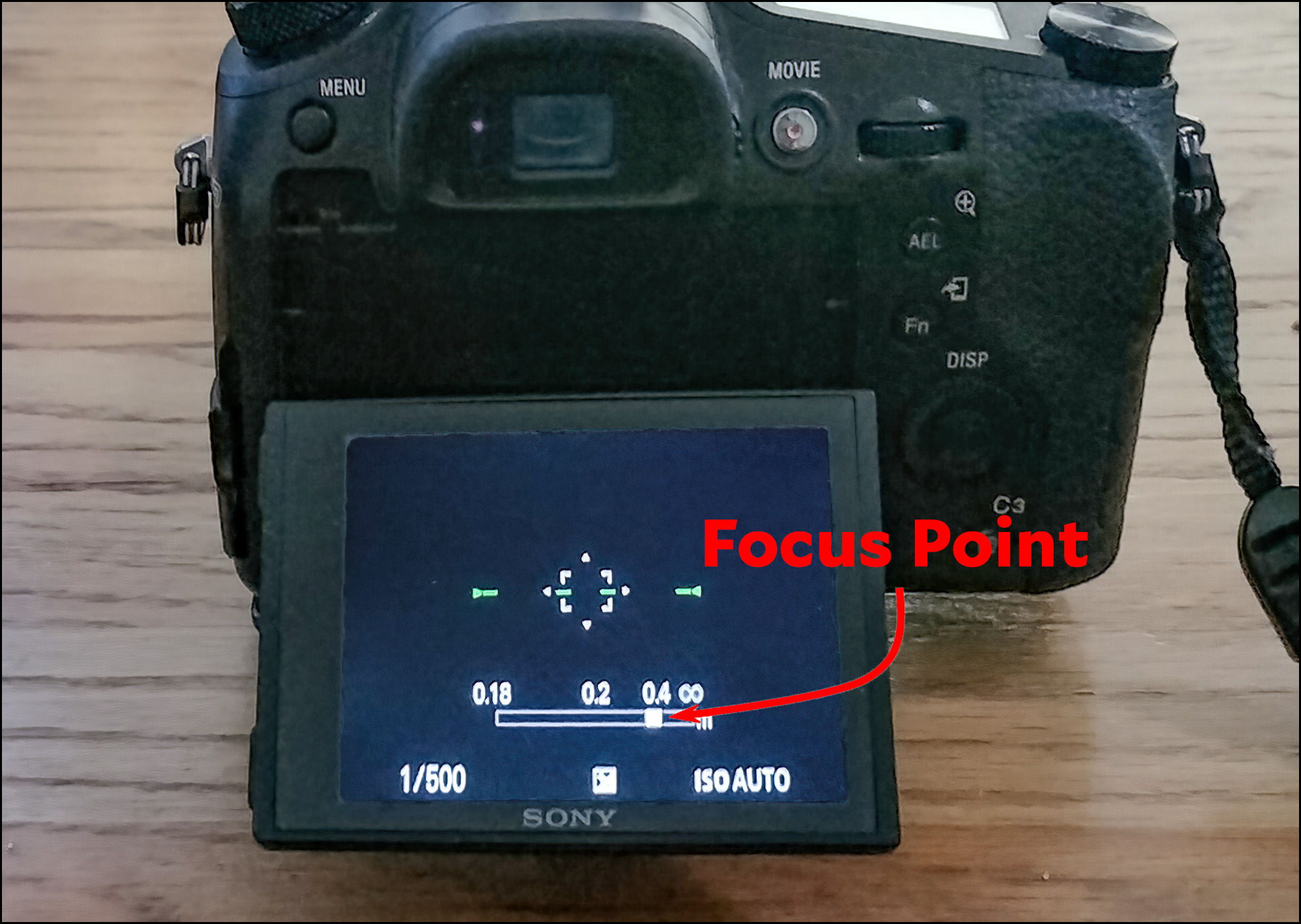 Over the years, I have eventually figured out that at 24mm I'm focused at infinity when the right side of the focus point lines up with the decimal point in 0.4. So I snapped away.
Over the years, I have eventually figured out that at 24mm I'm focused at infinity when the right side of the focus point lines up with the decimal point in 0.4. So I snapped away.
But then I tilted the camera up to begin taking the second row of the panorama—and suddenly everything was out of focus. Unfortunately, the only way to find the correct focus point is to (a) blindly adjust the focus, (b) take a picture, and (c) examine it. So that's what I did until I eventually found the sharpest focus point.
But when I panned the camera on the tripod, it went out of focus again. Other times the camera just lost focus for no apparent reason. Long story short, this happened over and over, and then happened again when I tilted the camera up for the third row of the panorama.
When I got home I discovered that most of my frames were poorly focused despite my best efforts, though the frames from the bottom row were OK. But it didn't matter: Photoshop refused to stitch any of them together. This was disaster #2. I tried other stitching software, but no dice. I got nothing for my six hour drive and evening's work.
Well, not nothing. This whole episode took so long that the darkness was fading away by the time I finished up and drove off to take some different pictures. As a result, I took a bunch of pictures at dawn and sunrise that were pretty nice. Here's one of them:
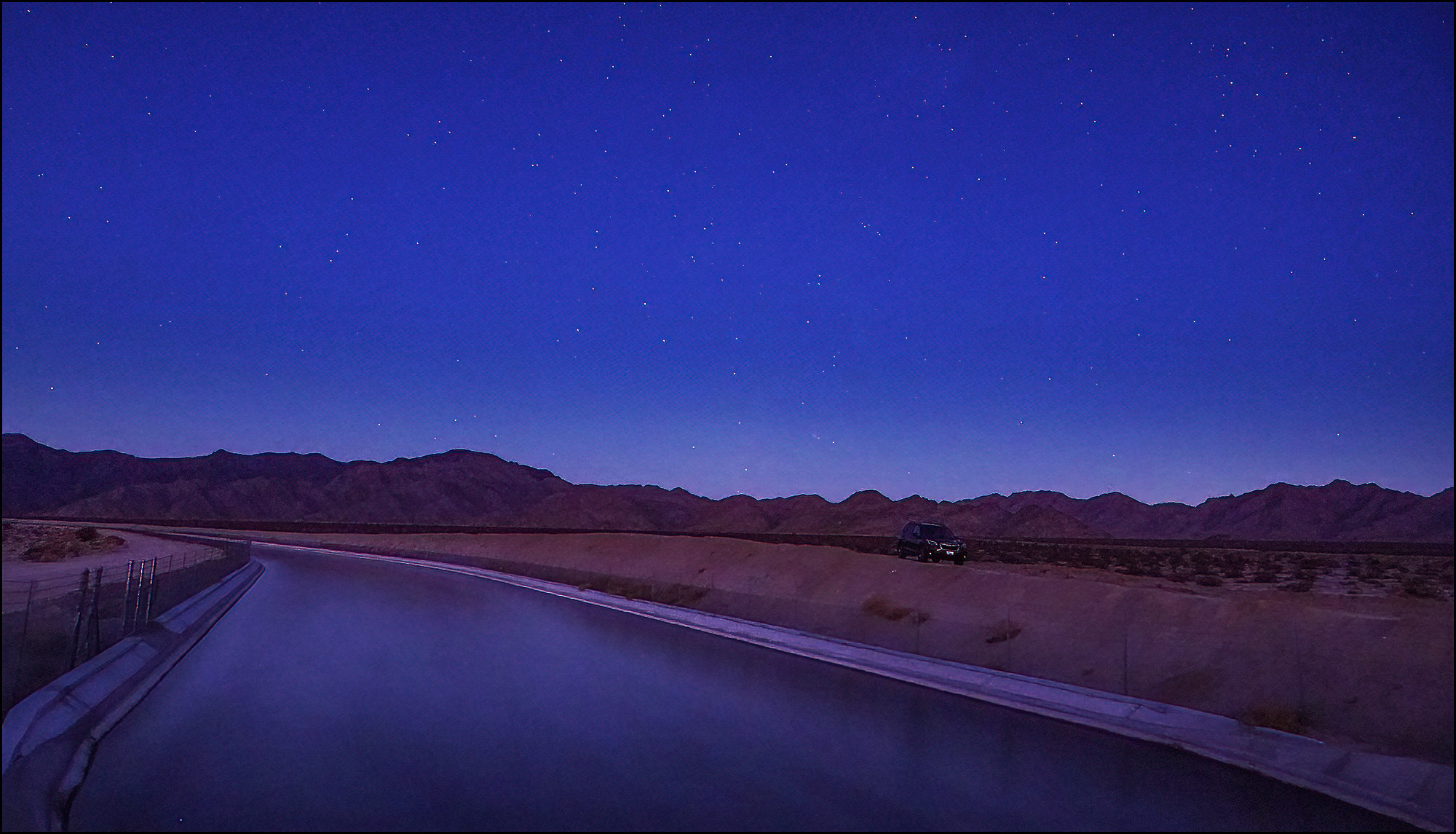
That's the Colorado River Aqueduct underneath a lightening morning sky. The stars are barely visible and the Milky Way is entirely gone.
So did I give up on the whole idea? Of course not! I thought I had figured out the whole focus thing, so a week later I went out again.
It turned out, however, that I hadn't figured out the focus problem. But now I have. It turns out that my camera is nuts: if you tilt it upward the infinity point changes. I can't even begin to make sense of this. But it really seems to be true, and eventually I was able to get sharp images for my entire arch panorama.
But when I got home, I discovered that most of my images exhibited disastrous amounts of motion blur. wtf? I was, of course, using a long exposure time, and 20 seconds is about the longest you can keep the shutter open at 24mm before the rotation of the earth starts to introduce some blur. But I had used 20 seconds the week before with no problem and I was using 20 seconds again. So why the blur? I still don't know the answer.
In any case, this meant that my pictures of the Milky Way core were no good. However, my panorama of the arch was mostly OK and Photoshop even stitched together the bottom row for me. Hooray! Things didn't go so well for the top row, however, since Photoshop had only a bare star field to work with. I eventually coaxed it to do a stitch, which came out wildly warped. So I wildly unwarped it.
I had high hopes that once I had the two rows created, Photoshop would at least stitch those together. But no. So eventually I did it by hand, which is a lousy way to do it. Here's the final image:

All things considered, that's not bad if I'm grading on a curve. But it's not very good either.
Aside from the craziness with focus, the problem is that my camera is just ill-suited for night-sky shooting. It has a small sensor, which means lots of noise. Its sensitivity is mediocre. And it has a minimum zoom of 24mm, which isn't really wide enough for Milky Way photography.¹
It would be fun to try this again with a better camera, but that would cost a fortune to rent and probably wouldn't be worth it. In the meantime, here's a picture of Venus rising above a tree in the Desert Lily Sanctuary.
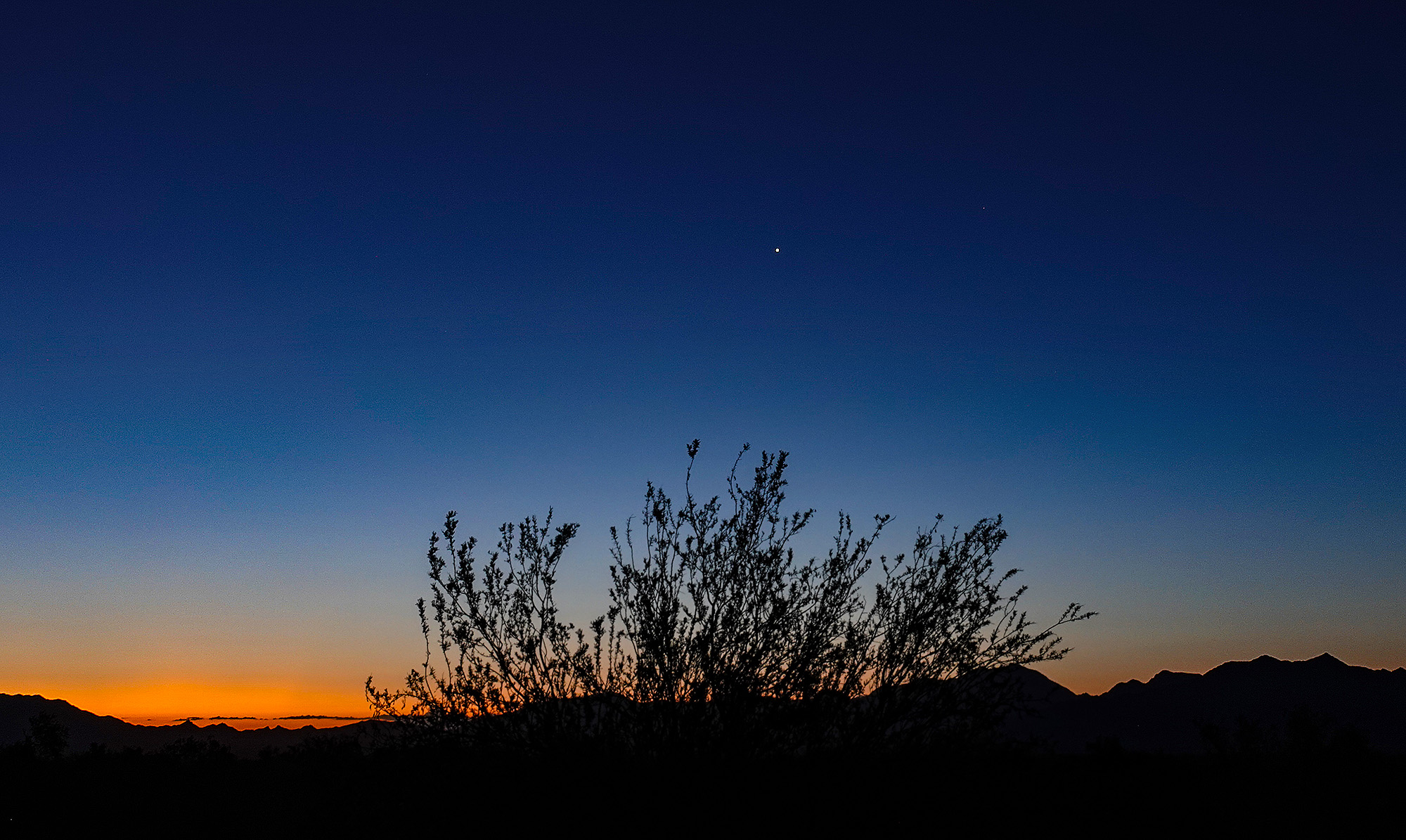
¹Aside from the focusing problems, a 24mm lens has to be tilted at a very steep angle to get the entire Milky Way arch. At that angle, it's almost impossible to get software to stitch the images together properly.

A valiant effort. People who've never been out to a desert have no idea that you can actually see our little arm of the Milky Way stretching across the sky. Really is awesome.
Liked the images at the top of the posting, notwithstanding the technical issues you faced. Only time, in recent history, I have seen an impressive display of the Milky Way was at Tortuguero Costa Rica, which was so far from light pollution that the night sky was outstanding.
I don't think your high end bridge camera, with a 1" sensor, is cut out for such images. Best guess is that the shifting infinity focus across the image is due to field curvature aberrations, which can only be mitigated by stopping down (not ideal for this application). Equipment more suited to the endeavor could be rented for about $200 per week (Nikon D750 + 14-24mm F2.8 lens). A DSLR system is now cheaper to rent than comparable mirrorless equipment. I have used "Lensrentals.com" a number of times with out incident. Best of luck.
For what it’s worth I think they’re still really good (though I don’t have a photographers critical eye, but their standards are too high anyways). Props to you for keeping on trying 🙂
Weird that tipping the camera up changes the focus point, but perhaps the lens is shifting ever so slightly. I would assume that 99% of pictures taken are taken with the camera not far off parallel, so it makes sense that could considered an “acceptable” defect by the manufacturer
Growing up in upstate NY in the 1940s/50s I remember some nights with great Milky Way displays. Likely even then there was enough light pollution that the sight didn't match what you saw, but the memory is still in my mind.
Love this post.
Kevin, I'd also love to hear what kind of relative results you get from your Pixel. I got my first ever pic of the Milky Way with it. Just set it on the ground with NightSight and let it go.
Sadly, my Pixel got stolen while I was in Paris. Pickpocketed on the Metro. So now I just have a cheap replacement phone.
Which I actually like better! But the camera is pretty ordinary.
Kevin Drum, ever the perfectionist - may you never give up, & may you achieve your goals.
I would have been happy to have taken those shots, but am more accepting with age.
re: Dark Skys
V6 Ranch near Parkfield CA
High Sierras
"A soliloquy is where you kind of look away off and kinda talk to yourself. They used to do that a whole lot back then. You do it today and somebody will take you away."
I beg to differ. Now, they just think you're on your bluetooth.
I think I speak for all of us: We've chosen to live our life through you vicariously, so everything you write is of interest to all of us.
And "why the blur?": obviously earth's rotation rate has sped up.
I have a Sony zoom lens with a large range (18-200) and the front is so heavy if you tilt the camera down, it extends all the way out and all the way in pointing up. They had to put a lock on the lens to hold it in place when not in use.Taping the zoom ring after setting it might help.
Astrophotography is just tough, but you should be very proud of what you were able to get, especially the ones shot close to dawn. I really am baffled by your camera's behavior. Is there really no way to physically adjust the focus with that lens?
That's one of the big problems with using "bridge camera" like the RX10. Often manual focus is a secondary thought and can be very difficult to use.
Personally, I use an OM System (ex-Olympus) OM-1 which has a nifty feature called Starry AF. Turn it on, hit the back button focus and it hones in on getting the stars in the image as sharp as possible. Works great and minimizes the pain that Kevin was having.
Wonderful picture. Now. Go to Southern Utah and take the same shot in a reflection on a still pond. Pretty amazing. I don't have your camera skills so you will have to imagine.
I'll join the chorus of commenters cheering you on against all odds. Your perseverance is inspirational, and the pictures ain't bad.😎
Pingback: Lunchtime Photo – Kevin Drum